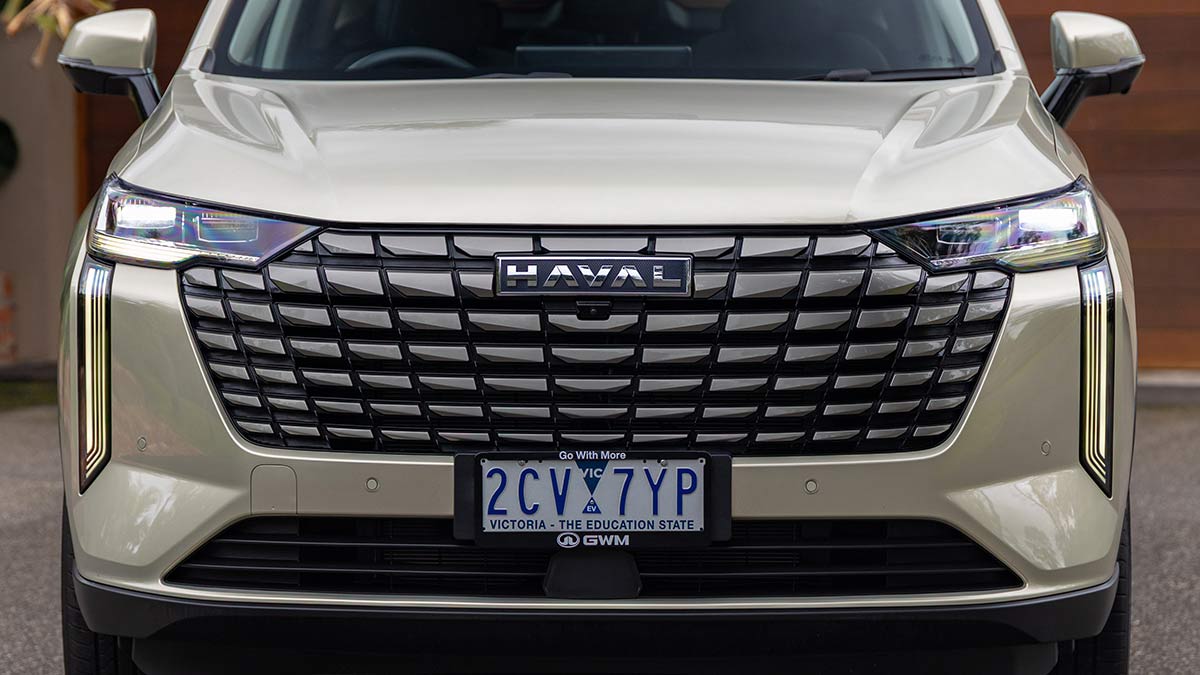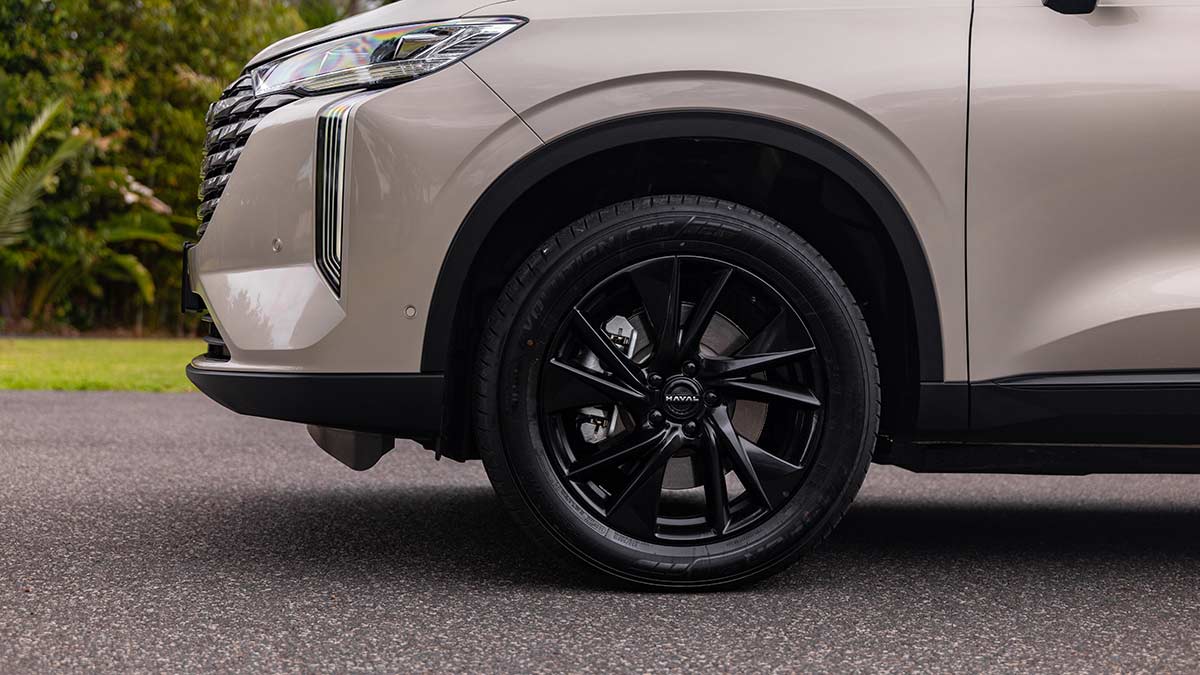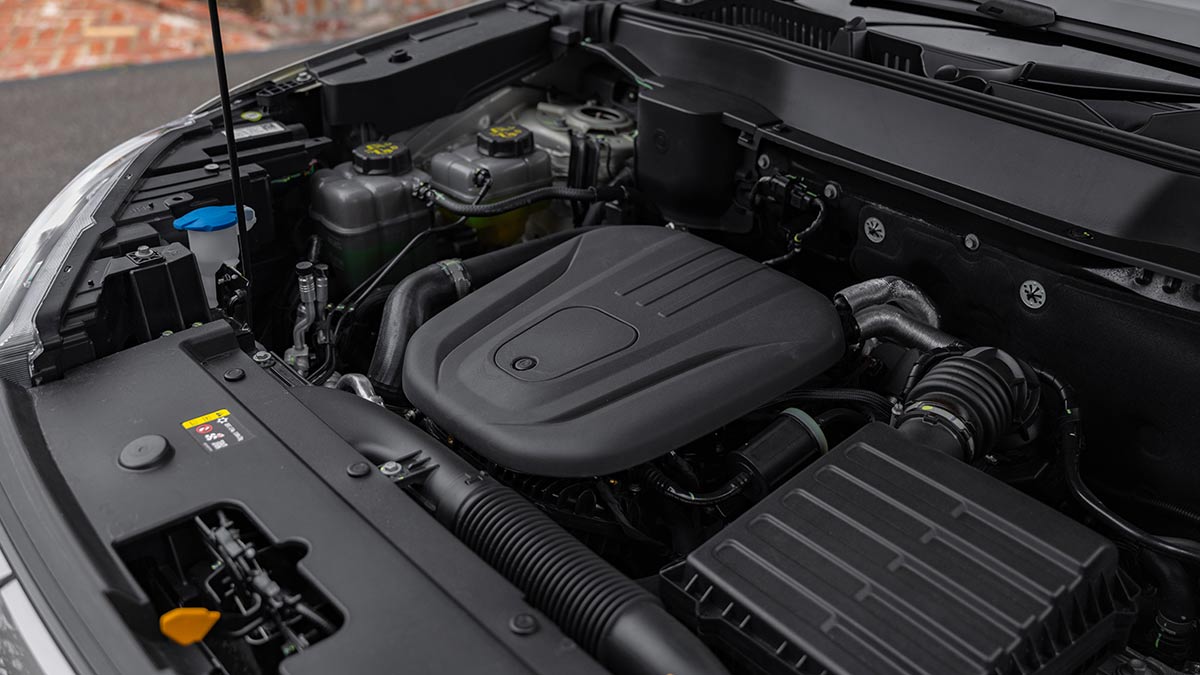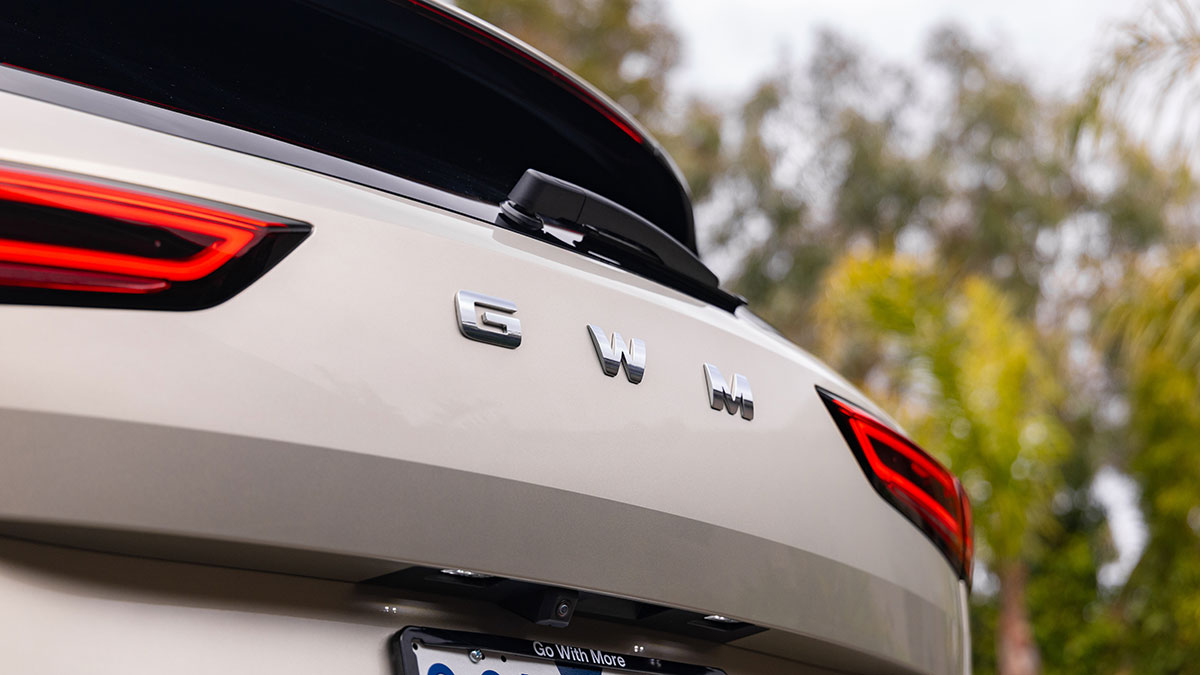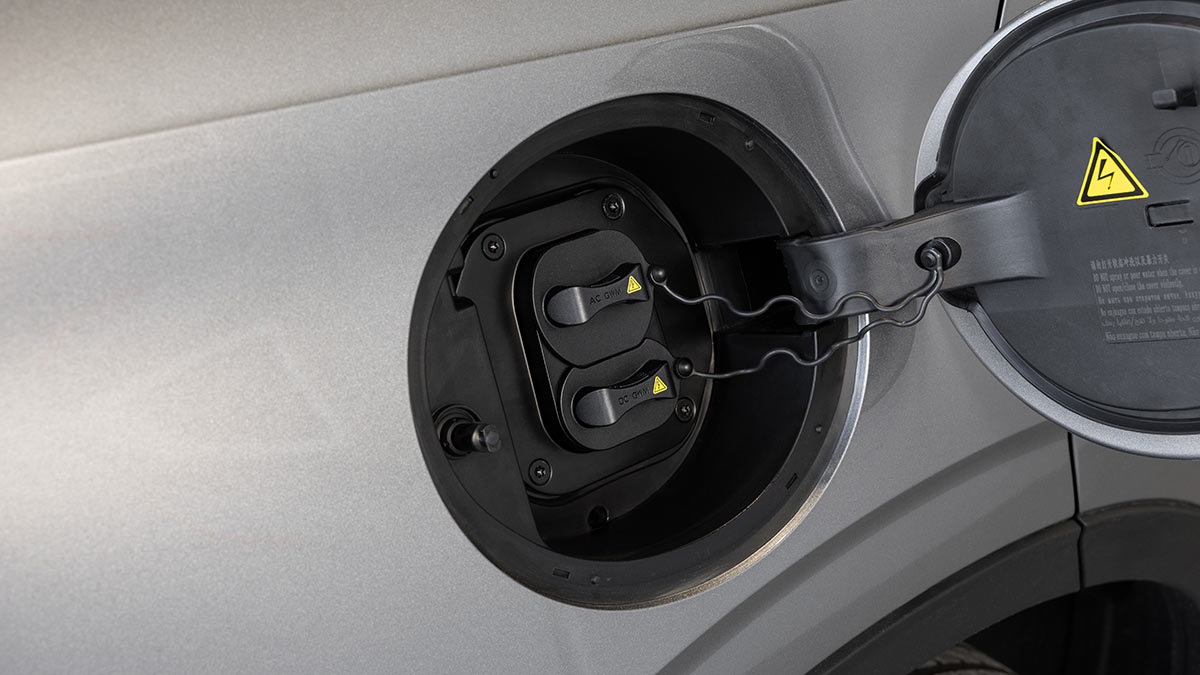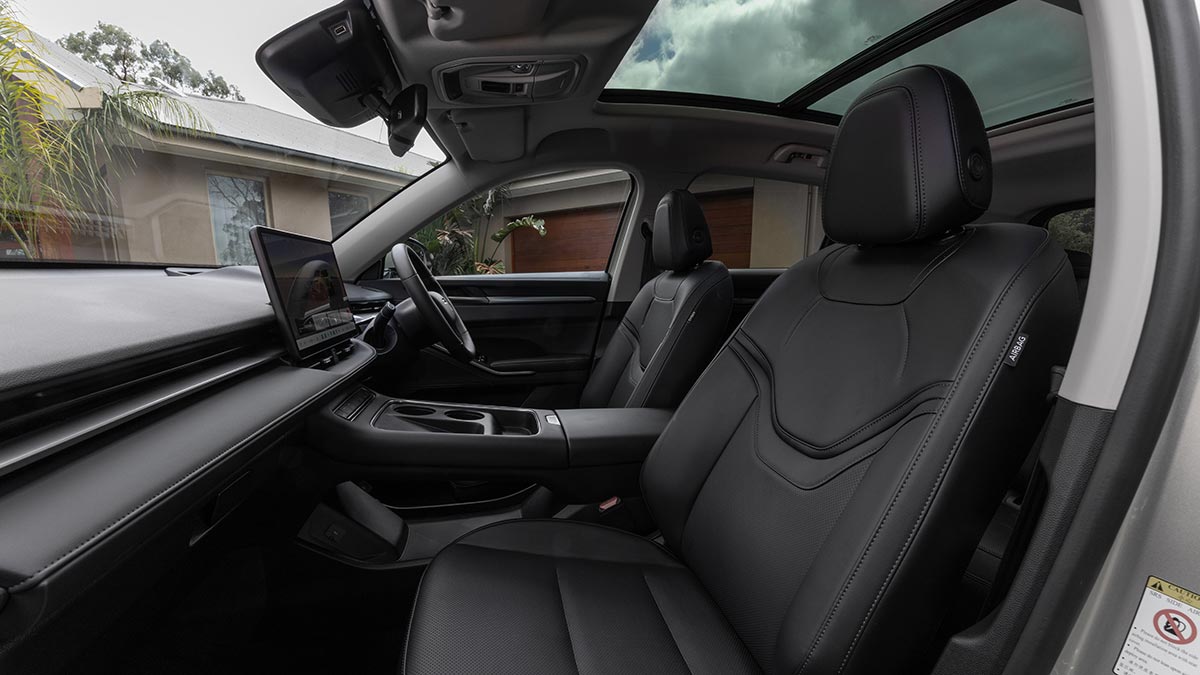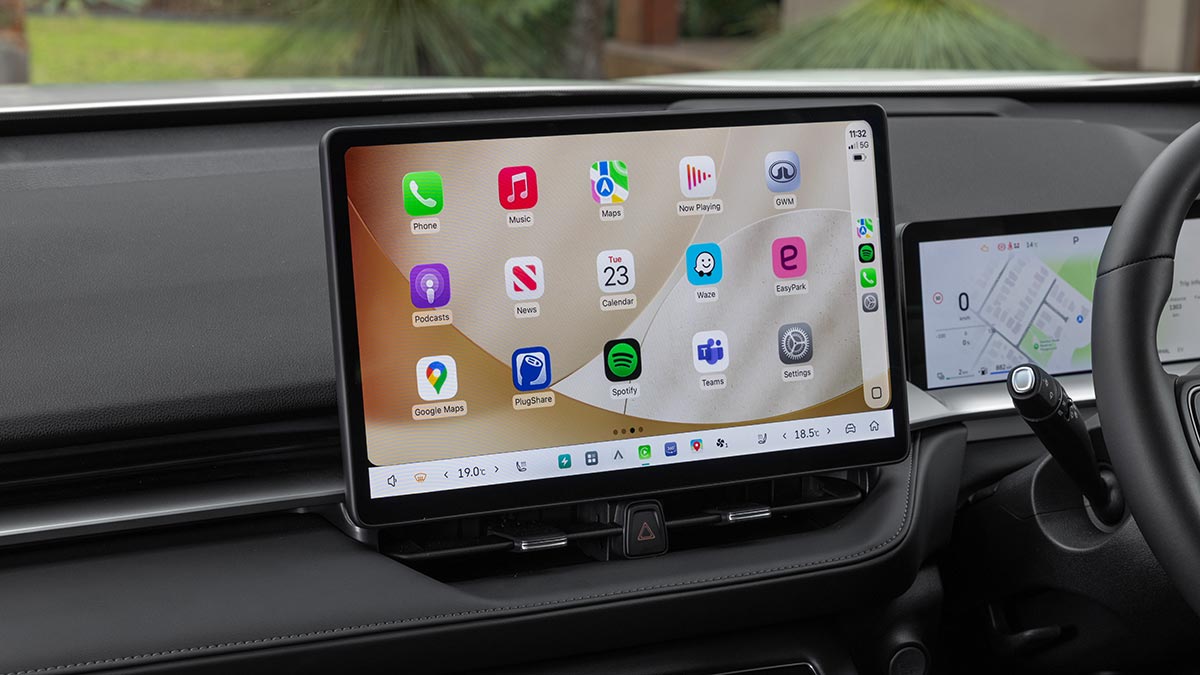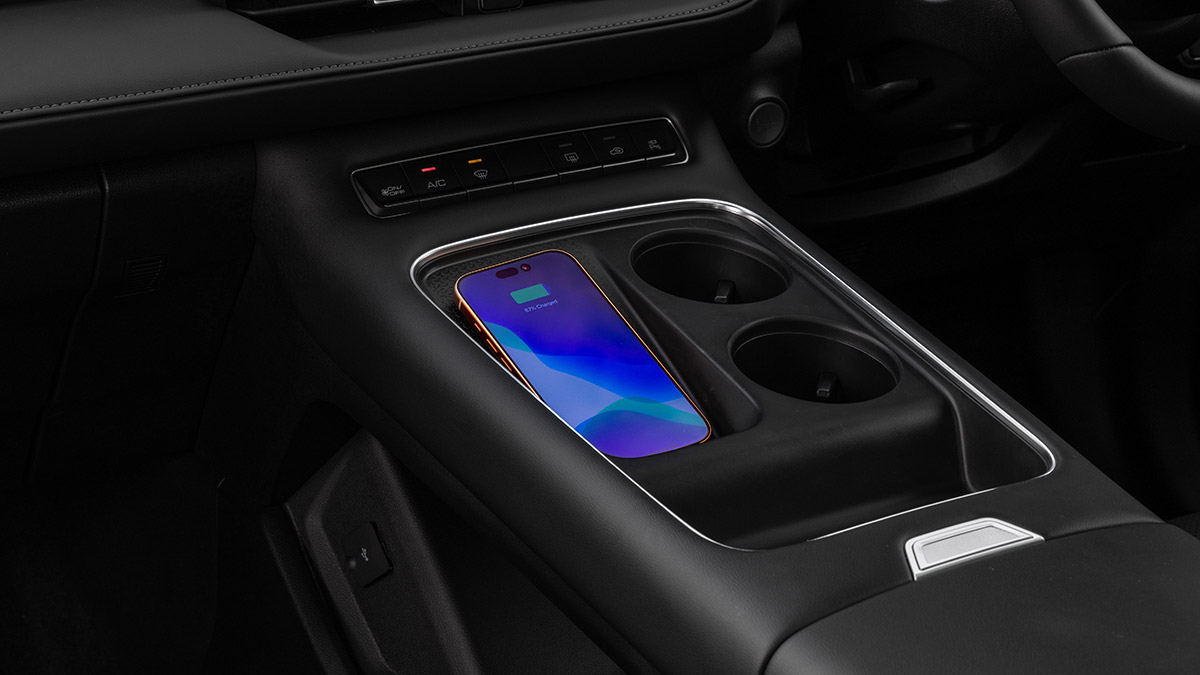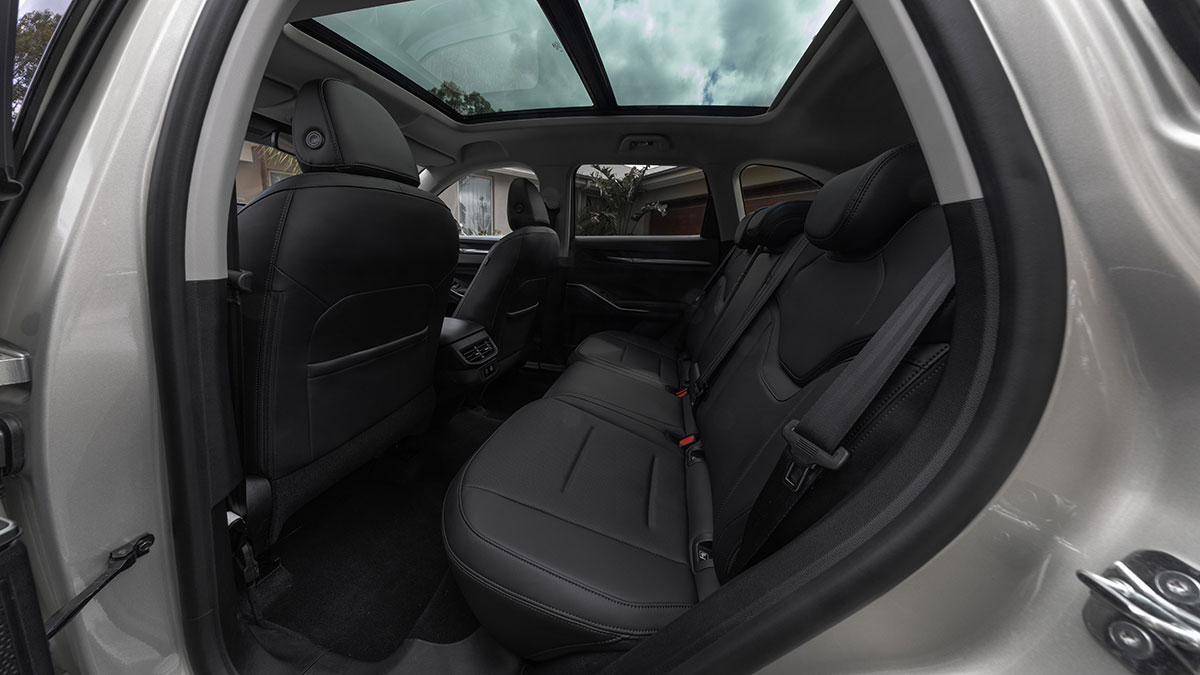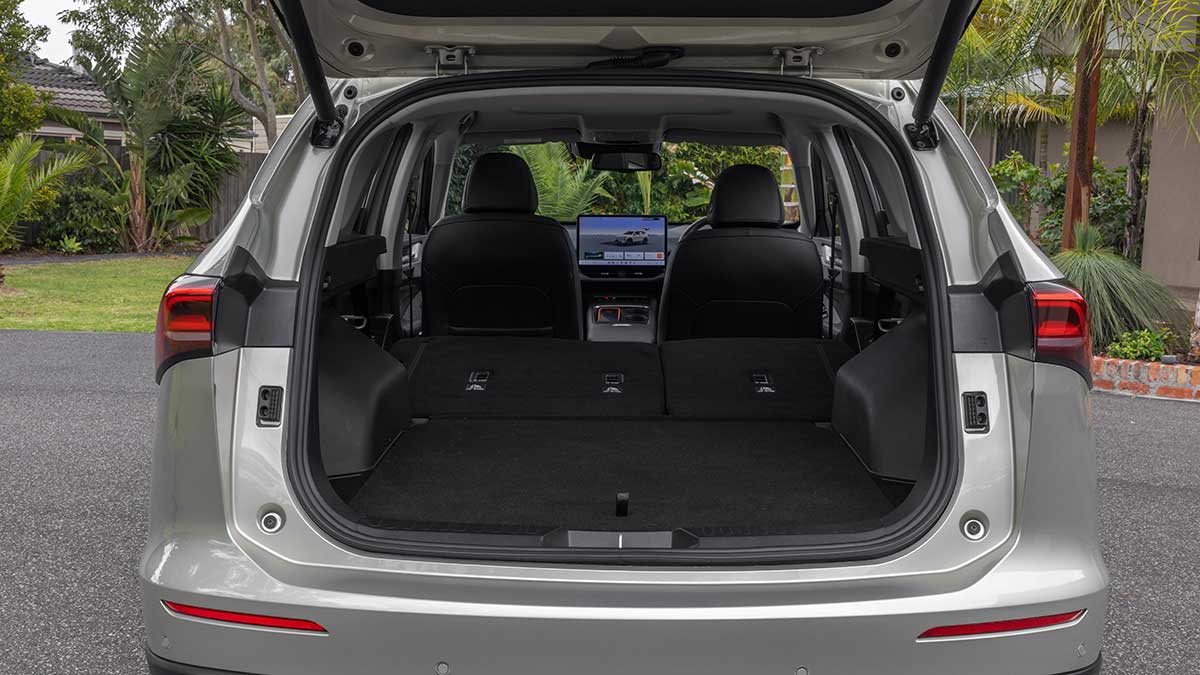The new Toyota RAV4 medium SUV is now on sale, offering a fresh design, higher tech, a plug-in hybrid option and GR Sport flagship. Here’s the pricing, specs, power, towing and other key details.
2025 GWM Haval H6 PHEV review
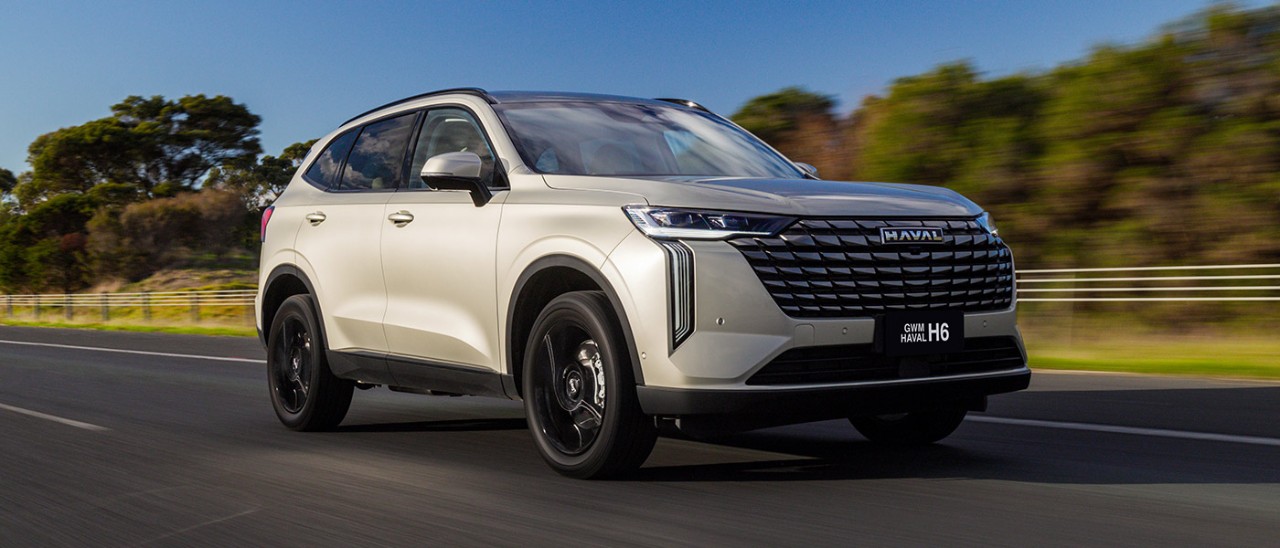
The GWM Haval H6 has been transformed with local suspension tuning, a plug-in hybrid powertrain and other major updates, moving from ‘hard to recommend’ to a medium SUV that’s now worth a closer look.
GWM is making a big move in the top-selling medium SUV segment with substantial changes to its 2025 GWM Haval H6, including a new locally tuned suspension designed for Aussie roads.
The chassis tuning combines with a significant mid-life upgrade wrought on the Haval H6 and the introduction of new plug-in hybrid (PHEV) models to run alongside the non-plug-in hybrids and turbo-petrol variants.
The aim is to push Haval H6 up the charts to become one of the most popular contenders next to the Toyota RAV4, as GWM targets 75,000 annual sales across its full line-up by 2027 and a position among the top five brands in Australia – currently the domain of Toyota, Ford, Mazda, Kia and Hyundai.
“H6 is crucially important for that,” GWM head of marketing, Steve Maciver, told RACV. “As the largest segment in the industry, if you can win or at least become one of the top players within that medium SUV segment – and also in light commercials/dual-cab ute – you’ve got a chance of becoming a top five brand.”
Maciver says hybrid is key to its success, with PHEVs to build upon the brand’s current position where regular hybrids make up 50 per cent of total H6 sales. But he cautions that “customers need to sense the value in that technology – and with Hi4, it’s that amazing combination of efficiency versus performance”.
Is he right? RACV was among the first to sample the latest GWM Haval H6 with the Hi4 dual-motor/all-wheel-drive PHEV powertrain and local suspension tuning, so let’s find out.
More: Research and compare plug-in hybrid cars on sale today in Australia
In this review
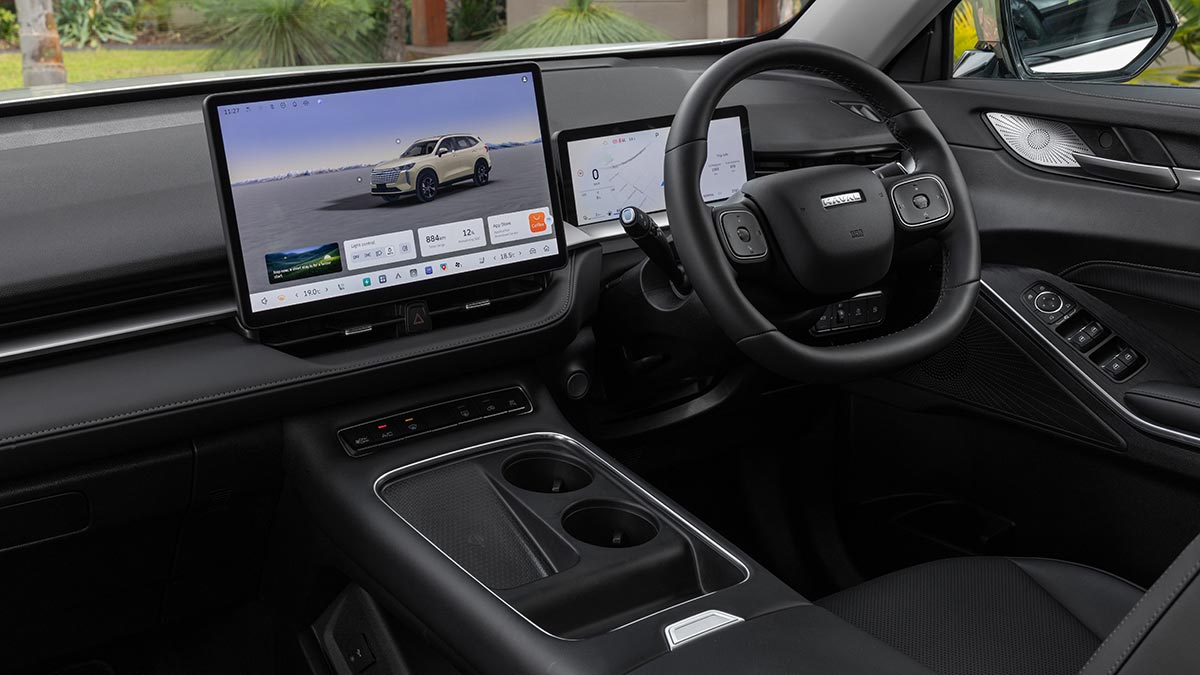
The 14.6-inch infotainment unit in the 2025 GWM Haval H6 PHEV features a much-improved new operating system.
How much does the GWM Haval H6 cost?
The 2025 GWM Haval H6 currently spans eight variants across turbo-petrol, hybrid and plug-in hybrid powertrains and two trim levels, Lux and Ultra. The conventional 2.0-litre turbo-petrol starts from $35,990 drive-away, the 1.5T petrol-electric hybrid opens at $40,990 drive-away and the new 1.5T PHEVs are priced from $44,990 drive-away.
These prices are based on entry-level Lux two-wheel-drive versions, with the higher-spec Ultra grade adding $3000 and also featuring more powerful Hi4 dual-motor/all-wheel-drive options with the hybrid (from $47,490 d/a) and the plug-in hybrid (from $50,990 d/a).
It’s the latter that we’ve driven here – the 2025 GWM Haval H6 Ultra PHEV AWD – with the new local suspension tune, which applies to cars produced from November 2025 and could push up pricing once they reach showrooms from late this year. That said, GWM is so highly reactive to market conditions that even its newest cars are often discounted. At the time of writing, this flagship variant was advertised for $48,990 drive-away, with a free home EV wall charger thrown in.
Four exterior colours are available on the GWM Haval H6 – no-cost Hamilton White and three premium paint options for an extra $495: Golden Black, Astral Pearl and Ayers Grey.
All H6 models come with GWM Australia’s seven-year/unlimited-kilometre factory warranty, while the battery pack on the hybrid cars has an eight-year warranty (also unlimited kilometres).
Service intervals for all H6 models are every 12 months or 10,000km for the first service and 15,000km thereafter. Service pricing is capped for the first five visits to a GWM dealership. For the dual-motor AWD PHEV, this averages $444 per visit or $2220 in total over the period. It’s a little higher than other powertrain/drivetrain combinations, but there’s not a lot in it – the base H6 petrol 2WD, for example, averages $422 across the same timeframe ($2110 total).
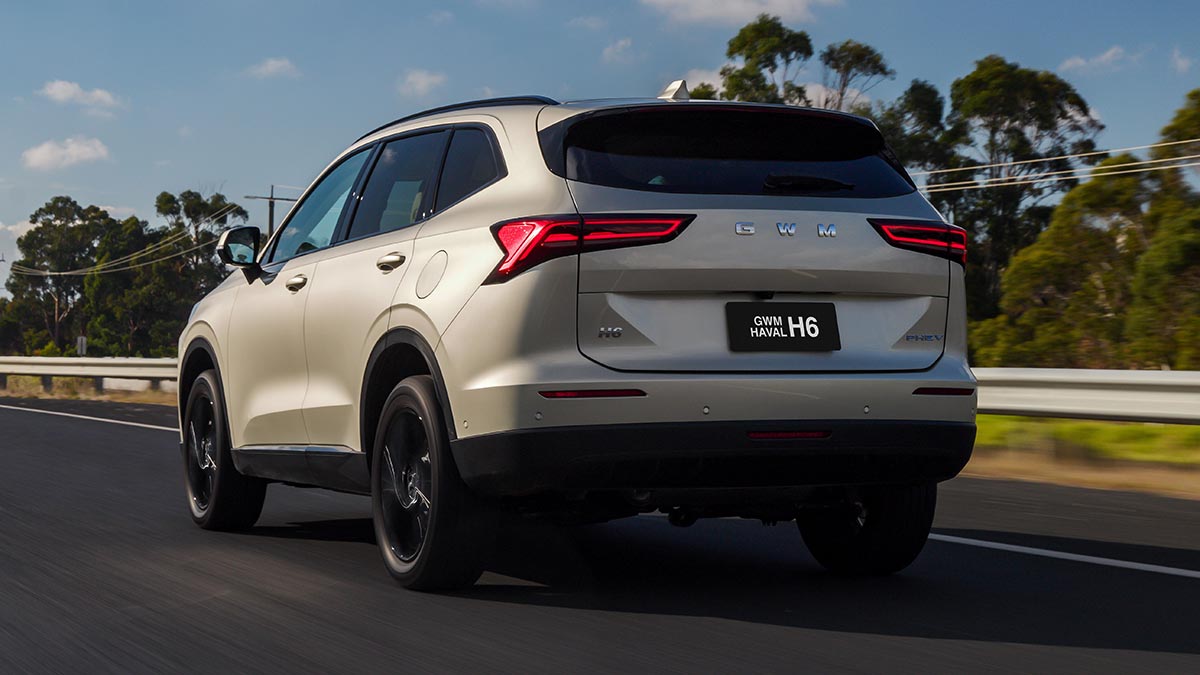
At the rear, the 2025 Haval H6 loses its full-width light bar in favour of sharper individual tail-lights and a ‘GWM’ badge.
GWM Haval H6 exterior design
The mid-life facelift for the 2025 GWM Haval H6 has brought a redesigned front fascia with less chrome and a more contemporary grille and vertical LED daytime running lights (DRLs). The narrow LED headlight clusters are unchanged but at the rear end there’s now striking angular LED tail-lights that are no longer connected with a light bar. A ‘GWM’ badge is now used in place of ‘Haval’, too.
Across the flanks, the designers have also removed swathes of garish chrome trim around the windows and doors (among other areas), and opted for black alloy wheels, for a cleaner and more sophisticated look overall.
The new Haval H6 is slightly longer than before, measuring 4703mm long (+50mm), 1886mm wide and 1730mm high. Wheelbase length remains at 2738mm.
All models except the entry Lux petrol now have an electric tailgate (with kick sensor), while standard features across the range include 19-inch alloys, dusk-sensing headlights (with auto high beam and a ‘follow me home’ function), a rear fog light, heated and folding exterior mirrors, puddle lamps, roof rails and keyless entry.
That’s a generous list, leaving the Ultra grade with a panoramic sunroof and tinted rear windows as its main drawcards outside the vehicle.
What is the GWM Haval H6 PHEV like inside?
As with the exterior, GWM’s designers have taken their new-found minimalist approach to the interior of the 2025 GWM Haval H6, too, toning down the bling and freeing up space around the centre console by removing the large and overly ornate rotary gear selector in favour of a simple stalk on the steering column.
This provides extra space for small items and room for a wireless phone charging pad on the console bridge, while other storage needs up front are mostly well catered for with the lower console area (with power outlets), large centre box and long – though shallow – door bins.
Importantly, there’s a larger and more powerful 14.6-inch centre infotainment touchscreen using the Chinese carmaker’s latest operating system, known as Coffee OS3, which is claimed to deliver faster processing speeds, improve connections with smartphones and other devices (including wireless Apple CarPlay and Android Auto), and make the user experience more intuitive with better menus, graphics, voice control, etc.
And we agree. It’s clearly presented, offers new and simple shortcuts, takes little brainpower to adjust major system settings and is highly customisable. The latter includes light and dark display modes (black/white) for both the infotainment screen and the 10.25-inch digital instrument panel.
The driver is handed a new, thicker-rimmed, leather-clad, multifunction steering wheel (which adjusts for reach as well as rake) and they sit snug in a comfortable seat with faux leather upholstery, six-way electric adjustment and, on the Ultra, two-way lumbar support and position memory.
The front passenger seat has four-way adjustment (manual on Lux, powered on Ultra) but no lumbar support or memory. The upgrade to Ultra brings heating and ventilation for both front seats, along with a few other bonus features like a heated steering wheel, driver’s head-up display and a nine-speaker stereo (up from eight).
PHEV variants miss out on automatic functions for parking and reversing but do have some connected services that are not found on other H6 variants at this stage. These don’t, however, extend to automatic emergency collision notification (eCall). All models have dual-zone climate control, power windows (with an anti-pinch function) and an auto-dimming rearview mirror – more pointers to the high equipment loading found here – while across the rear seat there’s excellent room, air vents and USB-A and USB-C points.
The rear bench has a 60/40 split-fold for extending cargo space from a useful 560 litres to a maximum 1445L, albeit in the form of a ramp as the seatbacks do not fold flat. There is no spare wheel on any hybrid model, including the PHEVs, leaving an inadequate tyre repair kit and portable compressor tucked under the floor. Petrol variants use a space-saver spare.
The boot area has a cargo cover and a 12V socket, while the H6 PHEV also has Vehicle to Load (V2L) capability for charging electrical appliances such as laptops and camping gear.
Is the GWM Haval H6 PHEV good to drive?
Our first drive in the 2025 GWM Haval H6 with the Hi4 dual-motor plug-in hybrid powertrain and localised suspension tuning was limited to a short circuit on country roads in regional Victoria – and a back-to-back sample on the ride and handling track at Holden’s former Lang Lang proving ground.
That ruled out verifying the EV-only driving range claims of up to 100km (on the lenient NEDC scale), the combined 1043km engine/e-motor range (NEDC) and ascertaining a reliable real-world fuel consumption figure. But the plug-in hybrid H6 impresses on other levels, and the suspension tuning is a clear step forward.
Previous testing with the H6 across petrol and hybrid variants left us wanting more, all the goodwill brought with the price, equipment and packaging dissipating once we hit the road and found a car with a jittery, floaty ride and other underwhelming driving characteristics.
Happily, it doesn’t take long to feel the improvements that former Holden dynamic engineer Rob Trubiani has made in the latest model with revised steering calibration and damper tune for the front strut/rear multilink suspension.
The H6 is now tauter, with sophisticated damping that’s absorbent and comfortable over bumps and rough bitumen – never letting shock into the cabin – but allows more feel through the steering and improves vehicle body control on lumpy, undulating roads and in corners.
The Trubiani-tweaked AWD H6 PHEV delivers predictable handling and more accurate and responsive steering that’s free of kickback in rough bends. It’s impressive, but the H6 hasn’t all of a sudden moved to the top of its class.
The front tyres can scrabble for grip in tight turns, which is not a surprise given the powertrain’s abundant torque transferring to the road (even with four-wheel drive), yet we were startled by the swift rebuke from the electronic traction and stability control system in shutting power down.
More calibration work is needed here, plus some finessing of advanced driver assistance systems (ADAS). For example, the lane keeping electronics were hellbent on ‘correcting’ the car’s position, most often on narrow country roads, while the speed sign recognition missed the posted limit on a few occasions.
Refinement levels could be better, too, with some unwanted wind noise at higher speeds and tyre noise across course surfaces.
Producing a combined 268kW and 760Nm, the Hi4 plug-in hybrid powertrain delivers smooth and spirited performance from a standing start. It offers EV, HEV and ‘EV priority’ modes, the latter making full use of the e-motors (one on each axle) and leaving the petrol engine out of the equation unless the driver or conditions demand it. You can be left wondering for a split second when that might take place, but when the engine does kick in the transition is clean and the response strong.
The 19.09kWh lithium iron phosphate (LFP) battery is positioned under the floor in the chassis, contributing to a hefty 1980kg kerb weight for this flagship AWD variant. It takes about three hours to replenish the battery from 15 to 100 per cent with a 6.6kW AC charge, as found with an EV home charger using single-phase power, down to just half an hour (from 30-80%) with a DC charge up to 34kW from a public fast-charging station.
If you’re diligent with charging and make good use of the power modes when out on the road to maintain battery charge for when you need it most, the H6 PHEV should prove to be highly efficient and economical to run. It also offers a single pedal driving mode and adjustable regenerative braking levels.
Maximum braked towing capacity on the H6 Ultra PHEV AWD is 1500kg, as per other hybrid and plug-in hybrid H6 models. The petrol-only variant can tow up to 2000kg.
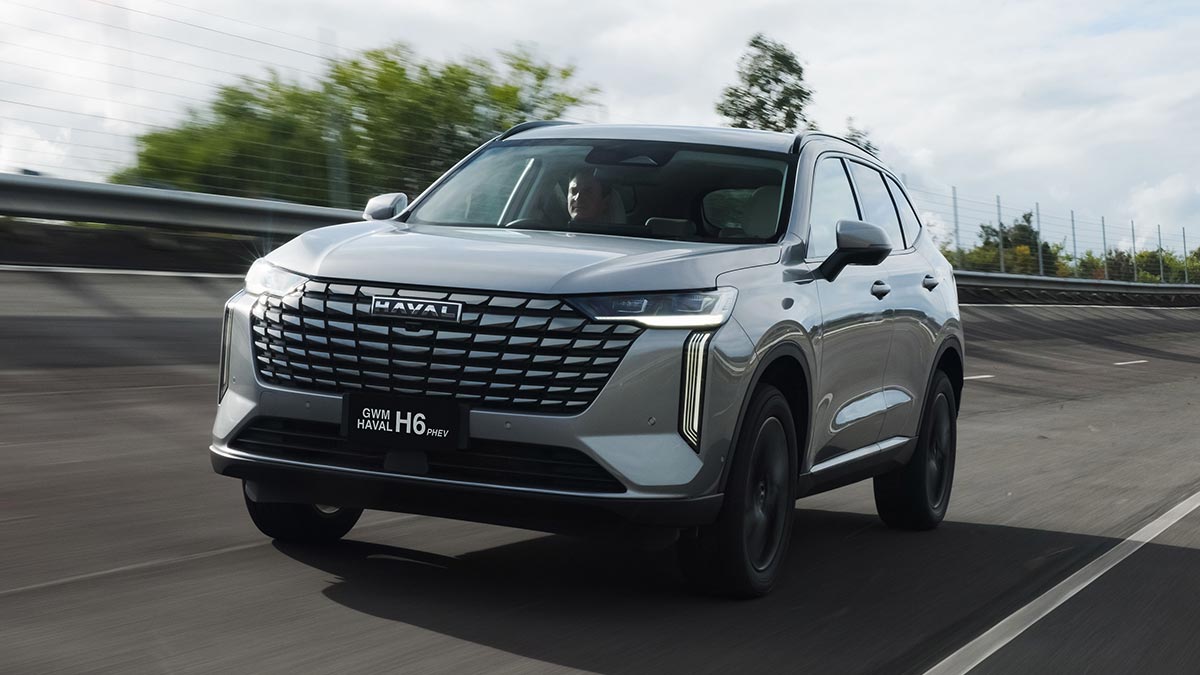
Engineer Rob Trubiani behind the wheel of the GWM Haval H6 PHEV at Lang Lang, testing its new steering calibration and damper tune.
What safety features does the GWM Haval H6 have?
All 2025 GWM Haval H6 models are fitted with seven airbags – dual front, front side, front centre and curtain airbags – and a broad range of electronic driver assist systems.
These include a 360-degree surround-view camera (with 180-degree ‘transparent chassis’), trailer sway mitigation, adaptive cruise control, autonomous emergency braking (with pedestrian/cyclist detection and junction assist), driver fatigue detection and tyre pressure monitoring.
As mentioned earlier, the lane keeping aids and traffic sign recognition could do with better calibration, while front parking sensors are restricted to the Ultra model grade. All variants have rear parking sensors.
The Haval H6 carries a maximum five-star ANCAP safety rating based on testing conducted in 2022, however the new PHEV variants have not yet been assessed.
How does the GWM Haval H6 compare?
The 2025 GWM Haval H6 is a popular contender in the hugely competitive medium SUV segment, where there’s more than 30 models in the sub-$60,000 bracket alone. It fares well next other Chinese brands using a similar strategy – high spec, impressive tech and affordable pricing – and has key bases covered with petrol, hybrid and plug-in hybrid options.
With H6 PHEVs starting from $44,990 drive-away – rising to $50,990 for the flagship Ultra Hi4 tested here – GWM’s major rivals include the soon-to-launch BYD Sealion 5 (priced from around $40,000), the more established BYD Sealion 6 (from $44,400 drive-away), Chery Tiggo 7 Super Hybrid (from $39,990 drive-away), Geely Starray EM-i (from $40,932 drive-away) and MG HS Super Hybrid (from $50,990 drive-away).
The segment-leading Toyota RAV4 hybrid starts from $47,041 drive-away – and will enter a new generation next year with a PHEV option – while other major players that GWM is aiming to topple on the sales charts include the Hyundai Tucson (hybrid from $47,240 drive-away), Kia Sportage (hybrid from $51,453 drive-away), Nissan X-Trail (hybrid from $48,990 drive-away), Mazda CX-5 (no hybrid, petrol from $37,990) and, not least of all, the Mitsubishi Outlander PHEV, which starts from $57,990 drive-away. The Mazda CX-60 is also now available from $47,990 drive-away, although the PHEV version starts at $60K.
It’s worth noting that GWM also offers a sportier coupe-style H6GT with a similar performance-oriented plug-in hybrid powertrain layout from $53,990 drive-away. Watch our video below for a closer look.
Should I buy a GWM Haval H6 plug-in hybrid?
It’s not often a mid-life upgrade and running changes can switch a verdict from ‘hard to recommend’ to ‘take a closer look’, but indeed that’s the case with the 2025 GWM Haval H6 PHEV – as driven here in high-output Hi4 AWD guise with the new local suspension tuning.
The localised tuning is important and applies across the H6 range – new dampers are tailored to specific models, although note that petrol-engine variants miss out on steering revisions – however it’s not yet available in showrooms. We’d suggest holding off taking a test drive until dealers receive the first batch of ‘AT1’ cars (code for Australian Tune 1) once the changes are made on the production line during November.
The Haval H6 hasn’t become a class leader overnight, continuing to frustrate with some elements of the driving experience. Yet the chassis tweaks, in concert with the strong-performing new plug-in hybrid powertrain, upgraded infotainment operating system and other detail improvements, add substance to a package that previously relied on low pricing with lots of bells and whistles.
The information provided is general advice only. Before making any decisions please consider your own circumstances and the Product Disclosure Statement and Target Market Determinations. For copies, visit racv.com.au. As distributor, RACV Insurance Services Pty Ltd AFS Licence No. 230039 receives commission for each policy sold or renewed. Product(s) issued by Insurance Manufacturers of Australia Pty Ltd ABN 93 004 208 084 AFS Licence No. 227678.
